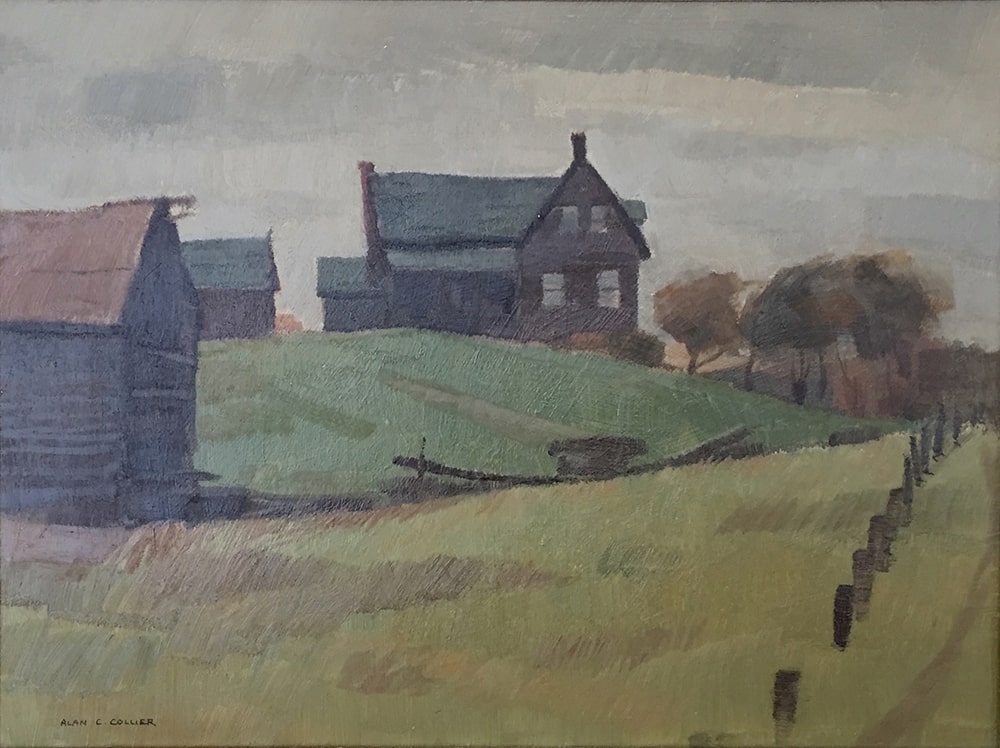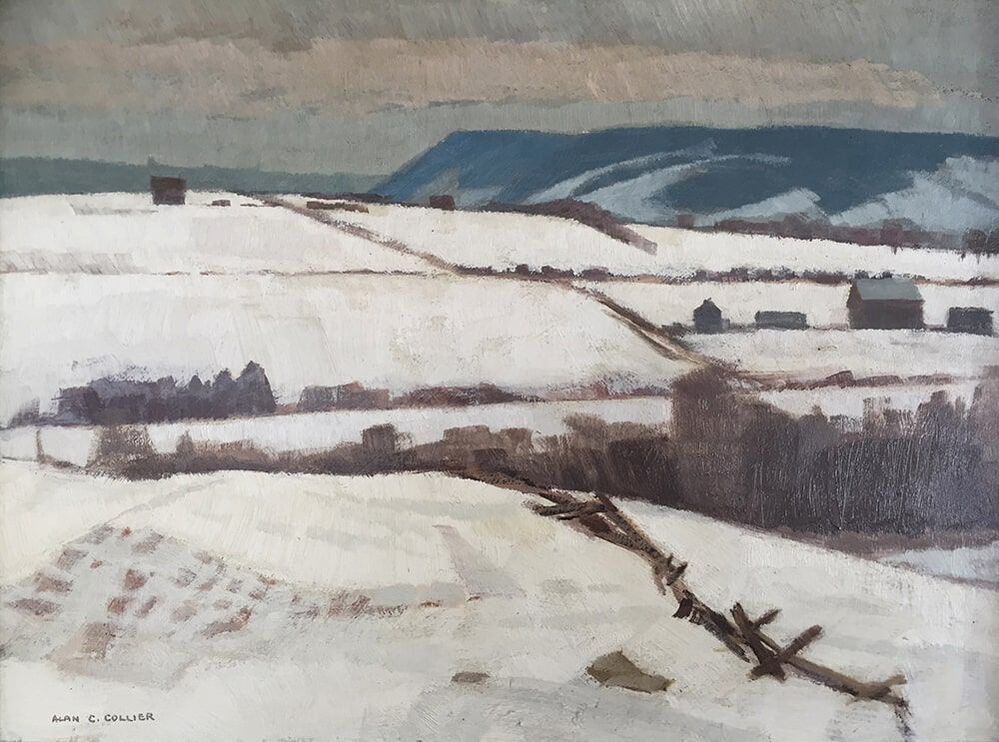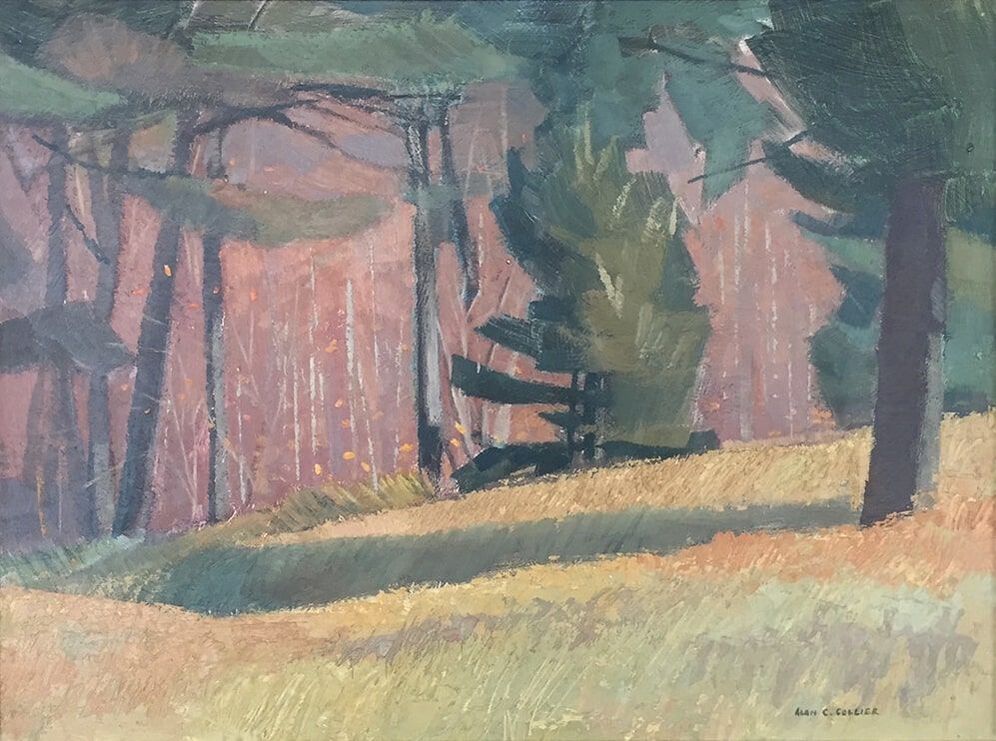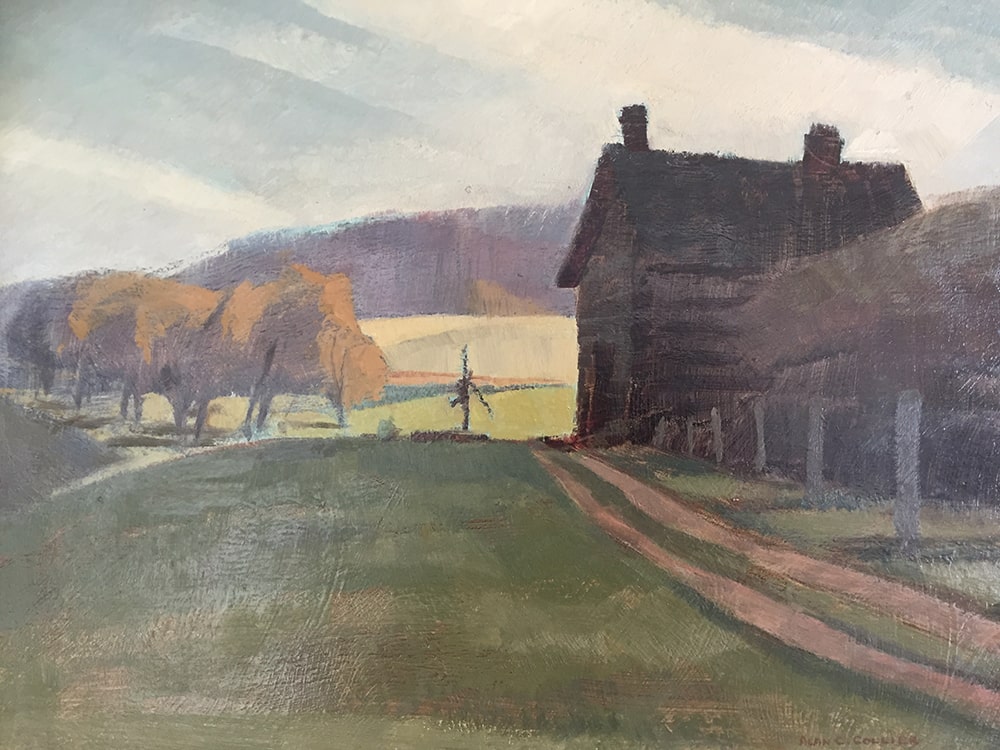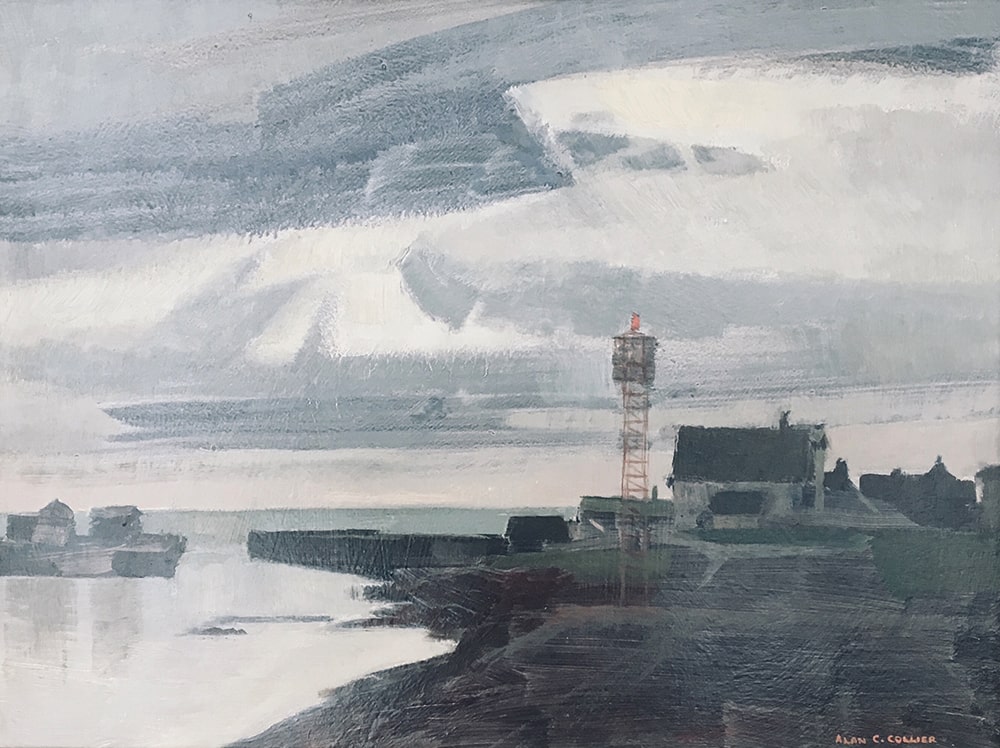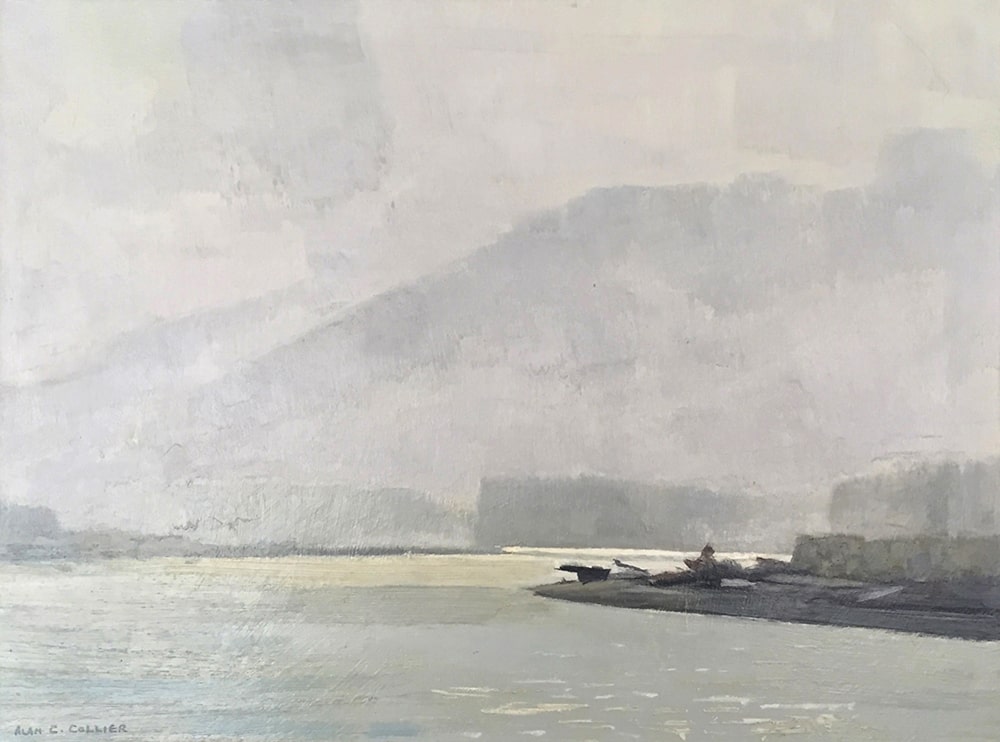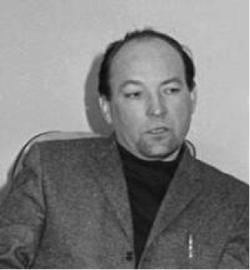Recently Sold:
Alan Caswell Collier, 1911 – 1990, RCA, OSA
Born in Toronto, Alan Collier studied under J.E.H. MacDonald, and Franklin Carmichael at the Ontario College of Art (1929-33). Following graduation, he travelled across the country and worked as a miner to earn enough money to study at the Art Students’ League in New York City where re studied from 1937 to 1939, under Howard Trafton. During his studies, he returned to mining from time to time to enable him to continue with his education. He then continued to work in New York as a commercial illustrator until 1942.
In 1943 he joined the Canadian Army then returned to Toronto after the war to continue his advertising career while concentrating more and more on his painting. Over the years he made trips to British Columbia and many other parts of Canada travelling by trailer with his wife and son. One year, however, he returned to the selenite mines where he had worked, and painted a series of canvases from the miner’s point of view.
In 1951 his background in mining became the inspiration for a series of paintings depicting the underground work environment, an interest that spanned several years. He also made annual road trips with his family to paint Canadian landscape. In 1963 he received a commission from Standard Oil to paint landscapes along the Trans-Canada Highway.
In 1967 Collier resigned from the faculty of the Ontario College of Art to devote himself to full time painting. That same year he was awarded the Centennial Medal for his contributions to Canadian art.
During his retirement, Collier made several sketching trips to the Canadian High Arctic. In 1972 he spent eleven weeks in the Eastern High Arctic on the Canadian Coast Guard Icebreaker. In 1978 he spent five weeks sketching through the Northwest Passage on the Canadian Coast Guard icebreaker John A. Macdonald. In 1984 he travelled to the Canadian High Arctic courtesy of the Polar Continental Shelf Program and Pacific Western Airlines. In 1985, his last trip to the High Arctic was spent sketching for two weeks.
Collier’s media include oils, watercolours, pyroxilin and acrylic polymer emulsion. His compositions are masterful in their simplicity. A muralist as well, he decorated the foyer of the Toronto agency of The Bank of Canada, and two murals in the Ryerson Institute of Technology, Toronto. His portraits include personalities in business and educational fields.. He exhibited at the Roberts Galley in the spring of each year of 1961, 1963 and 1965 and continues to be represented by that gallery. He was elected a member of the Ontario Society of Artists in 1952. Collier died in Toronto at the age of 79.
Collier's work can be found in numerous public and corporate collections, including:
The National Gallery of Canada, Ottawa
The Art Gallery of Ontario, Toronto
The Art Museum of London, Ontario
The Hamilton Art Gallery
The Kitchener-Waterloo Art Gallery
The Frye Museum, Seattle, Washington
Sir George William University and Loyola University (now Concordia University), Montreal
C.I.L. Collection, Montreal
Imperial Oil Collection, Toronto
Toronto-Dominion Bank Collection
Royal Bank Collection
National Trust Company Collection, Toronto
The Department of External Affairs, Ottawa
The Canada Council Art Bank
The McLaughlin Gallery, Oshawa
I.B.M. Collection, Toronto
Dofasco Collection, Hamilton
Imperial Bank of Commerce, Toronto.
Collier’s portraits can be found in numerous schools, universities, and business collections.
In 1943 he joined the Canadian Army then returned to Toronto after the war to continue his advertising career while concentrating more and more on his painting. Over the years he made trips to British Columbia and many other parts of Canada travelling by trailer with his wife and son. One year, however, he returned to the selenite mines where he had worked, and painted a series of canvases from the miner’s point of view.
In 1951 his background in mining became the inspiration for a series of paintings depicting the underground work environment, an interest that spanned several years. He also made annual road trips with his family to paint Canadian landscape. In 1963 he received a commission from Standard Oil to paint landscapes along the Trans-Canada Highway.
In 1967 Collier resigned from the faculty of the Ontario College of Art to devote himself to full time painting. That same year he was awarded the Centennial Medal for his contributions to Canadian art.
During his retirement, Collier made several sketching trips to the Canadian High Arctic. In 1972 he spent eleven weeks in the Eastern High Arctic on the Canadian Coast Guard Icebreaker. In 1978 he spent five weeks sketching through the Northwest Passage on the Canadian Coast Guard icebreaker John A. Macdonald. In 1984 he travelled to the Canadian High Arctic courtesy of the Polar Continental Shelf Program and Pacific Western Airlines. In 1985, his last trip to the High Arctic was spent sketching for two weeks.
Collier’s media include oils, watercolours, pyroxilin and acrylic polymer emulsion. His compositions are masterful in their simplicity. A muralist as well, he decorated the foyer of the Toronto agency of The Bank of Canada, and two murals in the Ryerson Institute of Technology, Toronto. His portraits include personalities in business and educational fields.. He exhibited at the Roberts Galley in the spring of each year of 1961, 1963 and 1965 and continues to be represented by that gallery. He was elected a member of the Ontario Society of Artists in 1952. Collier died in Toronto at the age of 79.
Collier's work can be found in numerous public and corporate collections, including:
The National Gallery of Canada, Ottawa
The Art Gallery of Ontario, Toronto
The Art Museum of London, Ontario
The Hamilton Art Gallery
The Kitchener-Waterloo Art Gallery
The Frye Museum, Seattle, Washington
Sir George William University and Loyola University (now Concordia University), Montreal
C.I.L. Collection, Montreal
Imperial Oil Collection, Toronto
Toronto-Dominion Bank Collection
Royal Bank Collection
National Trust Company Collection, Toronto
The Department of External Affairs, Ottawa
The Canada Council Art Bank
The McLaughlin Gallery, Oshawa
I.B.M. Collection, Toronto
Dofasco Collection, Hamilton
Imperial Bank of Commerce, Toronto.
Collier’s portraits can be found in numerous schools, universities, and business collections.

